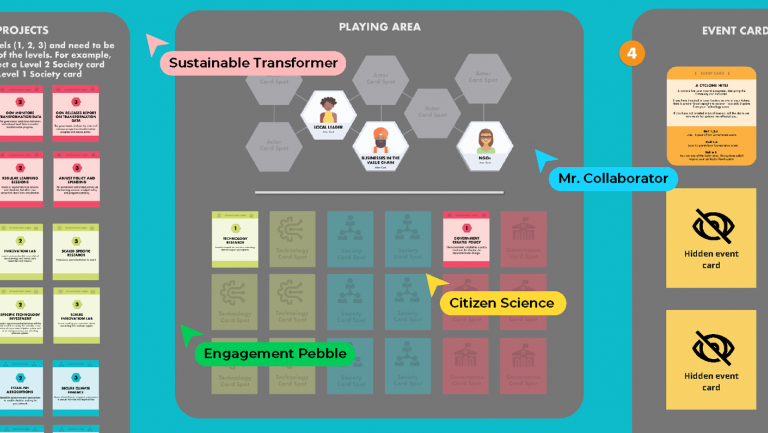Sign up for our monthly newsletter

Reframing ageing for a people-centred aged-care system
It is an eye-opening statistic that makes clear the extent to which many communities are set for a demographic change that cannot be ignored.
One in three children born in the West today will live to be 100.
And by 2065 this number is projected to rise to one in two.
The number of older people in our communities is increasing each year. For many, this represents a problem that must be solved – the demographic time bomb that we hear about so often in the daily headlines.
What's more, caring for the older people in our midst is already a responsibility that we are, at times, failing to meet as societies. In Australia, the Royal Commission into Aged Care Quality and Safety will soon report back its initial findings. Among them are expected to be shocking examples where older people and their interests have been failed by the system that is supposed to care for and protect them.
It doesn't have to be this way.
By reframing an older population as an opportunity rather than a burden and by bringing the power of human collaboration and creativity to this challenge, we can not only change the way we think about ageing but improve the experience that older people have in the systems we create and maintain to support them.
That’s why ThinkPlace drew together experts, stakeholders and design practitioners from across the aged-care sector recently for a day-long symposium about the 100-year life and the possibilities it opens up.
Jointly organised with the University of Canberra's Dr Fanke Peng, the event featured Dr Claire Craig from the UK’s Lab4Living and was co-ordinated by ThinkPlace Healthy Societies Lead Cybelle Ledez and Senior Designer Susan Atkinson.
The day began with a working breakfast for senior leaders across the sector. It then featured an extended workshop for users, carers, workers and other stakeholders across the system, looking at the hundred-year life and the opportunities it presents. The final part of the symposium was a design session in which participants grappled with how to begin forming the collaborations to coalesce around ideas and kickstart the process of making new system interventions.
Insights generated over the course of the three events will drive a special report into aged care in Australia, being prepared by ThinkPlace. They also give some insight into how stakeholders across the sector will have a role to play in responding positively and constructively to the new playing field that emerges as a result of the commission’s inquiries.
At ThinkPlace we know that the best way to achieve meaningful reform is through co-design and human-centred methods - Cybelle Ledez.
“The role for design and designers here begins with their convening power," Cybelle ledez says. "That means identifying the different actors who need to be part of a strategic discussion, gathering them together and using the skills and tools of the ThinkPlace Design System to cut through entrenched differences and arrive at shared intent.
In this one day of activities we saw just how powerful and productive that approach can be.”
This kind of radical collaborations is what’s needed to create change that cuts through. It's also typical of how ThinkPlace tackles complex problems all over the world.
And, perhaps most singificantly, it represents a roadmap for how stakeholders can work together to co-create an aged-care system that values older people, the experiences that they have and the contribution they can continue to make to shared value for all.

In this context, the work of Dr Claire Craig and her team at Lab4Living in the UK is both inspiring and instructive.
Awarded a British Government grant of £4 million in 2019 to apply design-led practices to the 100-year life and the future home, Lab4Living is at the forefront of a global conversation about reframing ageing.
“For some time we’ve been stuck on a three-stage model of what ageing is,” Craig says.
“With the hundred-year life we are looking at a multi-stage conceptualisation.”

This means the traditional model of education, followed by work and then retirement is replaced by a much longer timeline featuring multiple opportunities for education, retraining, career breaks and career changes.
Design methods, particularly around ways of engaging people, can create very different conversations. We can build new understanding from different people’s perspectives and that is massively important - Dr Claire Craig
Four big themes emerged out of the symposium.
1. The need for people-centred design
People are central to the aged-care system. Users, carers and employees within the system want to be a key part of designing a better future. They are clear that they want the design of the future system to be done with them, not to them. Undertaking a design approach that brings people to the centre means you can co-create potential solutions that are meaningful for the end user and iterate with them to ensure it creates value for all involved.
2. The need to see ageing and older people as an opportunity not a burden
Co-design means making something alongside the people who will use it and who will be affected by it. That means incorporating the voice and interests of older people in the design process. When we do that we start to see the enormous contribution these people can continue to make (to both reframing the system and to the broader community itself). We can posit futures in which aged-care facilities host other parts of the broader community for activities and facilities such as exercise and entertainment. Why can’t aged-care facilities share space with universities? Or child care centres? How can the life experience of older people be a learning asset for younger generations? The possibilities are endless.
3. The need for collaboration within the sector
Within the aged care sector there are multiple actors, with divergent – sometimes even competing – interests and objectives. From government and other regulatory bodies to interest groups, private operators, not-for-profits and healthcare practitioners. Design thinking and design methods are an effective way to bring these people together and break the deadlock of business as usual. By exploring user-centred experiences and then making something together, in the room, new possibilities and collaborations can start to form.
4. The need for cross-sectoral collaboration
Creating a better aged-care system is a challenge that necessarily intersects with other systems. It is related to housing, to product design, to the health system and to social security and financial systems like superannuation. Designing for change means bringing all of these interests (and more) together in ways that are generative and constructive.
Want to talk to us about how our approach can help your organisation? Contact healthysocieties [at] thinkplace.com.au






